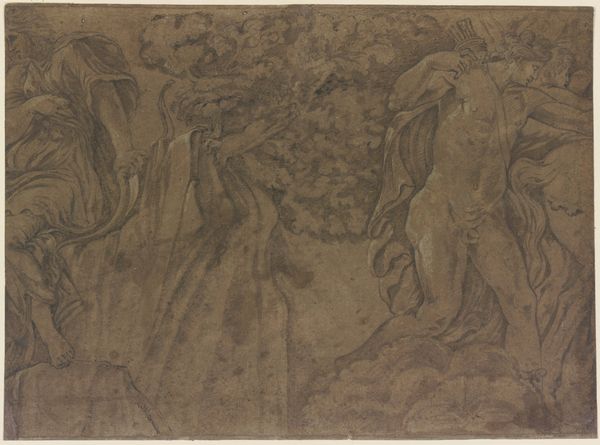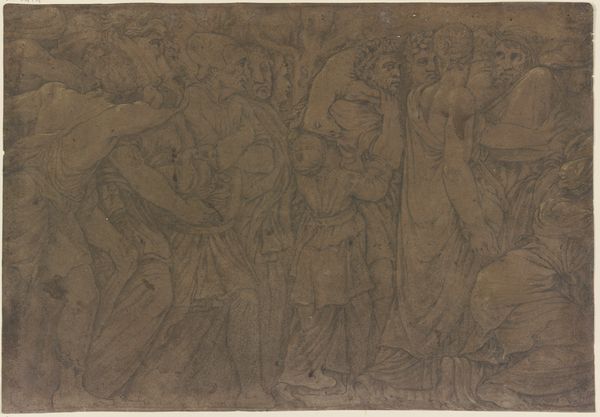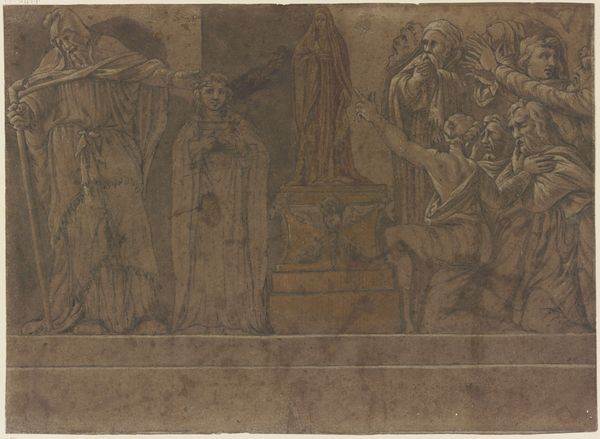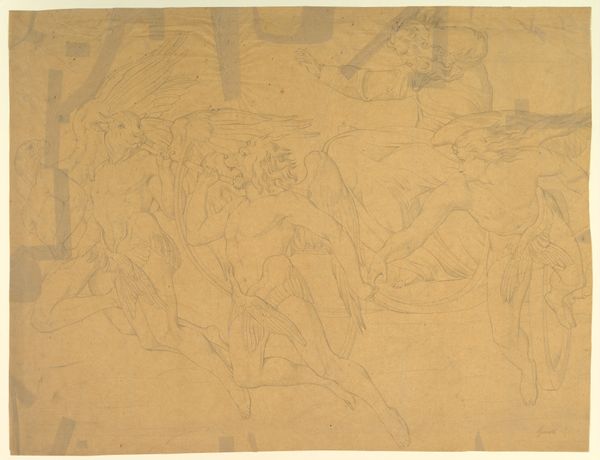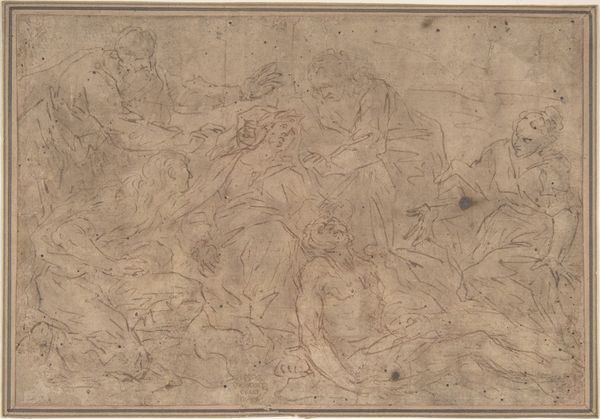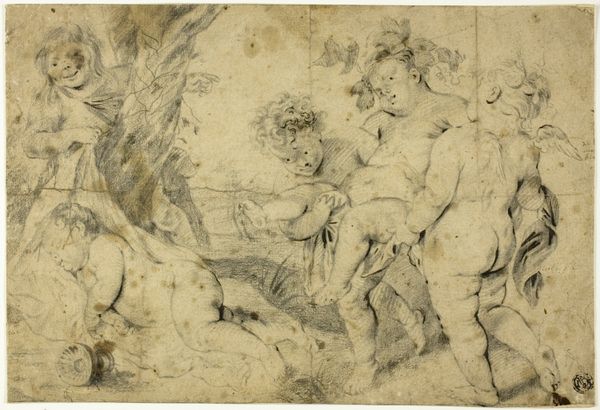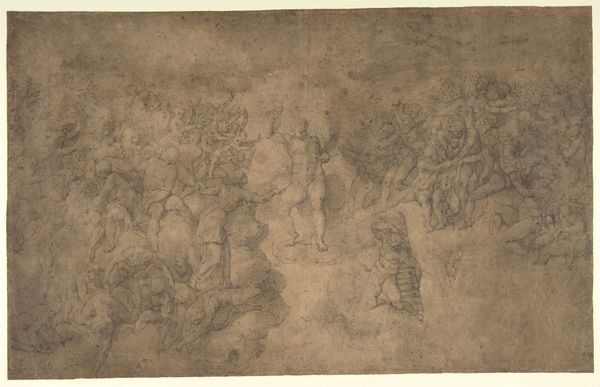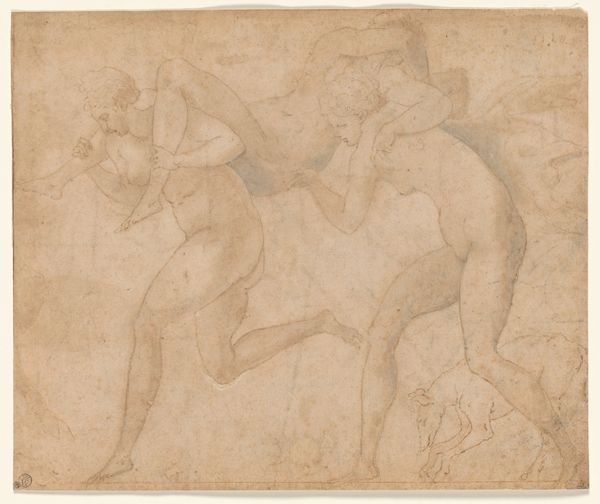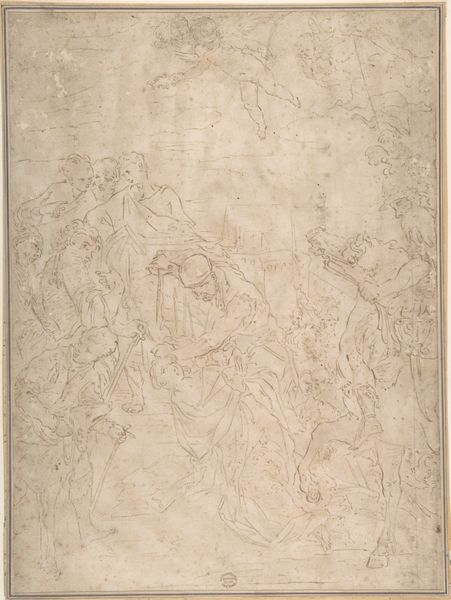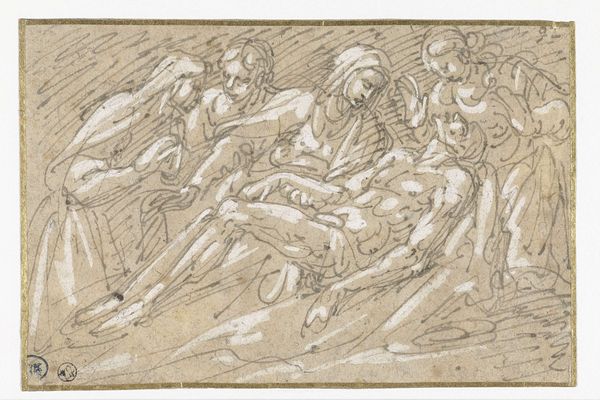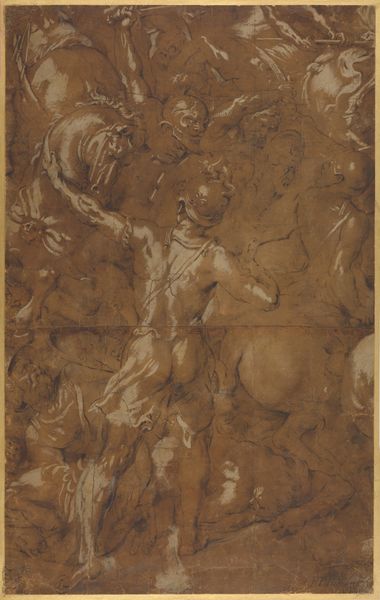
Der verlorene Niobidenfries an der Fassade des Palazzo Milesi in Rom 1656
0:00
0:00
drawing, paper, ink, indian-ink
#
drawing
#
high-renaissance
#
paper
#
ink
#
underpainting
#
indian-ink
#
13_16th-century
#
14_17th-century
#
history-painting
#
italian-renaissance
Copyright: Public Domain
Curator: This drawing, rendered in ink on paper, is attributed to Polidoro da Caravaggio and dates back to 1656. The title translates to "The Lost Niobids Frieze on the Facade of the Palazzo Milesi in Rome." Editor: My first impression is one of overwhelming chaos. It's as if a grand historical scene has been caught mid-explosion, figures intertwined with a raw, visceral energy. The shading seems to obscure more than it reveals. Curator: Indeed, the density of the figures does create a sense of drama. This piece is believed to be a record of a frescoed facade. Imagine the palazzo and how these artworks contributed to Rome's urban aesthetic. The very public placement implies these depictions impacted the understanding of history for broad audiences. Editor: Considering that, does the crowded composition signify something beyond mere decoration? It feels intentional, almost claustrophobic. Are the poses meant to express something specific about the Niobids narrative? Curator: Semiotically speaking, we must analyze how each figural element contributes to the overall symbolic field. The intertwined bodies create intricate relationships, foregrounding certain aspects of the Niobid myth. Furthermore, the lack of defined space pushes the action to the viewer. Editor: Right. Because, historically, these sorts of depictions of divine punishment served a didactic role. The tale warns against hubris, suggesting that the fate of the Niobids was a caution against challenging the gods. Considering the wealth and power associated with the palaces displaying such images, it would've also impacted the daily lived reality of the citizens in its midst. Curator: Precisely! The artist employs classical tropes and integrates sophisticated formal arrangement to project power. Look at the musculature and foreshortening on the male figure—they emphasize classical forms in order to further cement power and virtue in their visage. Editor: Fascinating how an image designed to celebrate classical virtues also serves a crucial function in maintaining a stratified social hierarchy, even if the scene depicts a violent fall. Curator: I concur. This close formal and sociohistorical study unlocks vital layers. Editor: Ultimately, seeing the blend of artistic skill, historical context, and potential impact reframes my appreciation of this somewhat unsettling image.
Comments
No comments
Be the first to comment and join the conversation on the ultimate creative platform.
